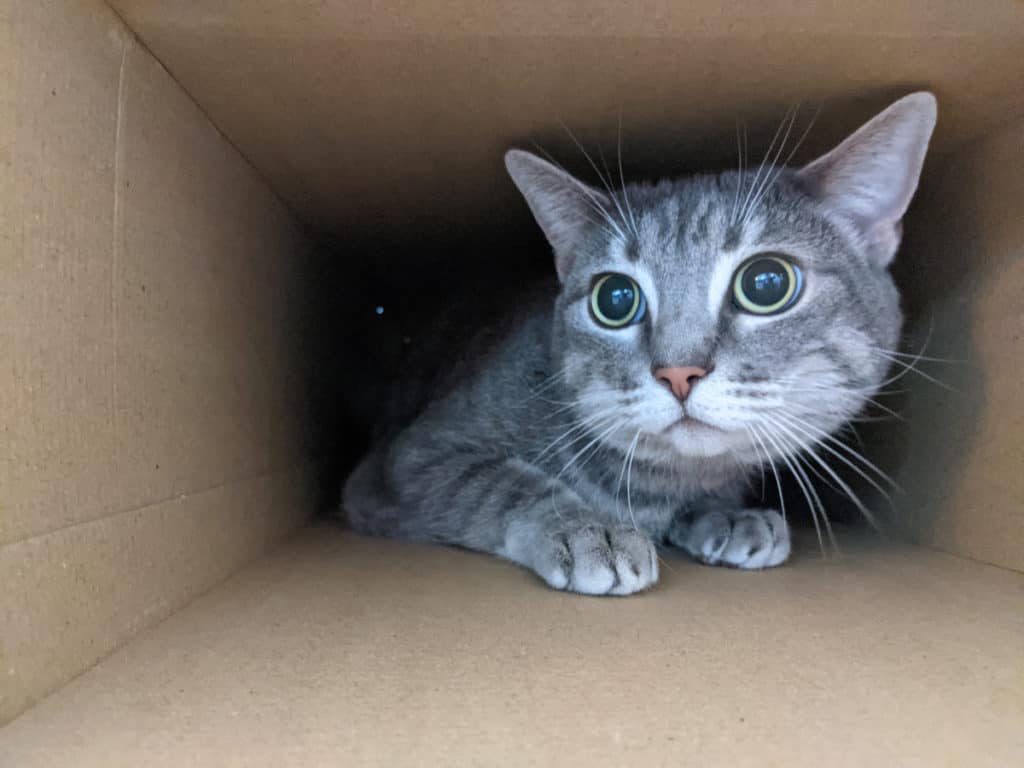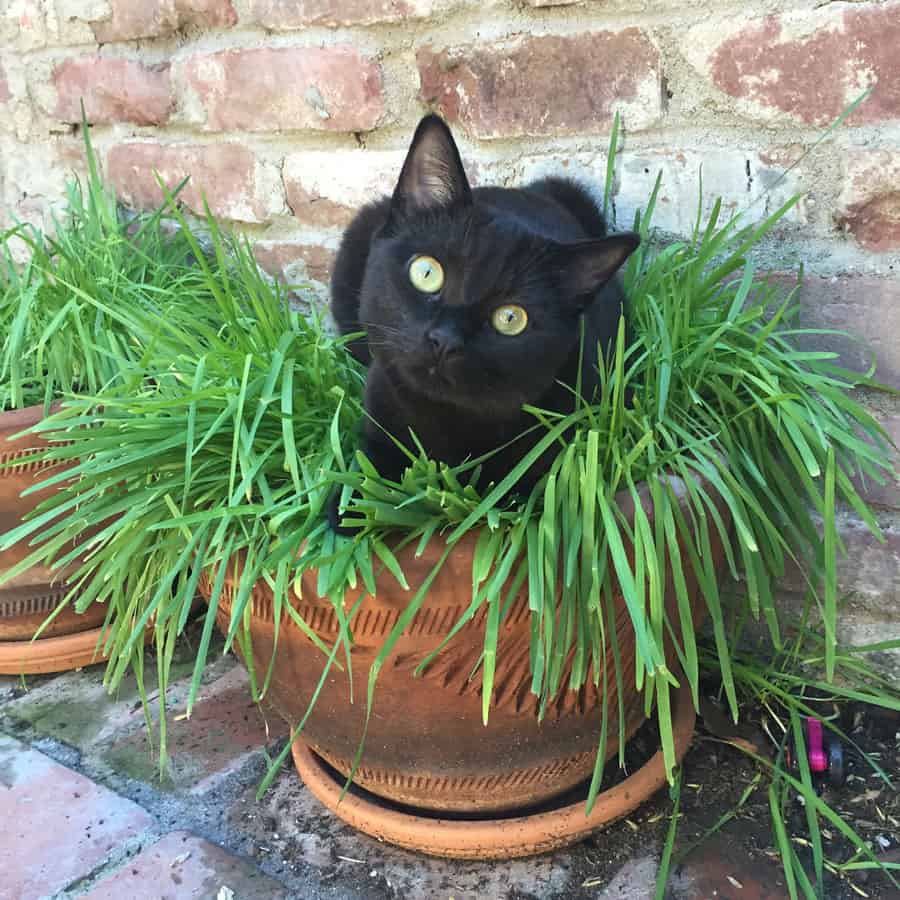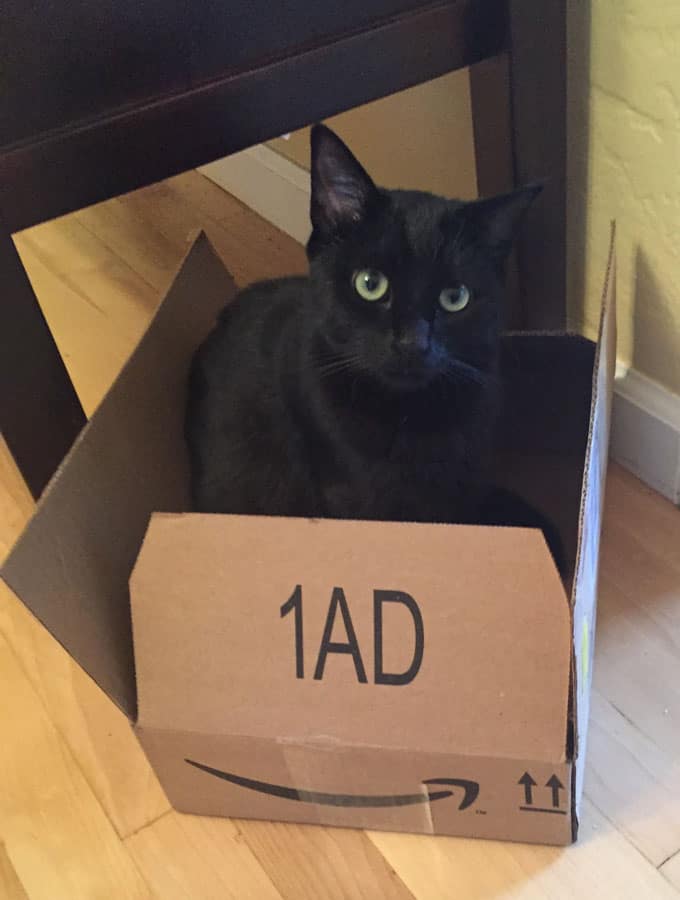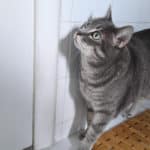What is it about cats and boxes?
The allure of boxes for cats is truly fascinating. Picture this: you return home laden with goods, all packed neatly in cardboard boxes. Even before you’ve completely unpacked, your cat has already commandeered one of the containers, curling up inside with evident pleasure.
Interestingly, while many cats balk at the idea of being confined in carriers, cages, or other inescapable spaces, they seem to derive immense comfort and entertainment from any cardboard box they can find.
This quirk of feline behavior holds a simple but joyous truth for cat owners. If you’re seeking the perfect treat for your cherished feline companion, there’s no need to splurge on expensive toys or accessories. Instead, offer them the simple pleasure of a basic cardboard box. It’s a cozy nook where they can curl up, feeling both secure and supremely content.
So why do cats really love boxes?
There are many reasons why cats love cardboard boxes, baskets, suitcases, and other small enclosed spaces. As small mammals, they are both predators and prey and cats like to operate from a safe position.

In the wild, you will see big cats resting with their back against a wall or hiding up on a tree, lying in wait to sneak up on prey. They feel safe, warm, and in control in small spaces.
Boxes provide cats with a feeling of safety and security.
Cats, despite living with humans for thousands of years, still retain many of their wild instincts. One of these instincts is the drive for safety and protection.
In the wild, cats are both predator and prey. While they hunt smaller creatures, they are also targets for larger predators. To ensure their safety, cats seek out hiding spots, and a box provides the perfect enclosed space.
Boxes provide a safe space from which cats can comfortably observe their surroundings without being easily spotted.

Even in the safety of your home, these instincts remain strong. A box helps create a secure, bounded space, offering a sense of control over their environment. It can also serve as an escape from stressful situations or interactions.
Cats snuggle up inside boxes to keep warm
Boxes are a source of insulation, helping cats stay warm and comfortable.
Cats don’t like to feel cold; the thermoneutral zone for a domestic cat is 86-97 Fahrenheit. If temperatures fall below this range, the cat will have to make extra heat to stay warm. Temperatures above this range and the cat will need to release metabolic energy to cool.
If you see your cat crawling into tight spaces, it could be that he/she is feeling cold or hot. A simple cardboard box is a good source of insulation.
Cardboard boxes are also tight, making it warm and comfortable for the feline to curl up inside and conserve body heat when outside temperatures fall below the 86-97F range. This heat-seeking need is one reason why cats love to sunbathe.
Boxes are great places for cats to sleep
A pastime is only as good as where you spend it; for cats, cardboard boxes’ perfect texture is inviting. It is a safe, comfortable spot where they can catch some Z’s but remain on alert for other animals. Cats love to sleep. In fact, they spend most of the day just sleeping.

Sleeping helps them conserve energy. Providing your cat with some cardboard boxes to sleep in helps him to recharge when he goes chasing after prey.
Cats are naturally curious
What’s in the box? How does the material feel? Is it chewable? The cat wants to know. A new box in their home often presents an irresistible opportunity for investigation.

They will start scratching against any box or sneak and curl up inside them even before you’re done unpacking whatever goods was just delivered in that cardboard box.
Cardboard boxes are a source of enrichment
Boxes can also be fantastic tools for environmental enrichment. They serve as play objects, stimulating the cat’s mind and providing a source of exercise.
A cat may spend hours jumping in and out of a box, pouncing, or even sliding around on a smooth floor.
Moreover, the texture of the cardboard is perfect for scratching, which cats naturally do to stretch, mark their territory, and shed the outer layers of their claws.
Some cats also find the texture of cardboard boxes inviting to chew, bite and shred to bits.
Boxes are a place to hide/get away from people/animals
Cats are both predators and prey; the stress that comes with this reality is immense. And cats don’t manage stress well; their instinct is to bolt and find a hiding place under the bed, behind a closet, in drawers, or behind the chair.
Boxes help to relieve stress in cats
Small tight spaces help felines reduce stress. It makes them feel a sense of control; they can curl in, hide, and avoid conflict but still keep an eye for other animals.
A 2014 study by researchers with the University of Utrecht in the Netherlands demonstrated that boxes can even lower stress levels in cats. In this study, newly arrived shelter cats were given boxes as hiding spaces.
Boxes help cats adapt faster to new environments
The researchers found that the cats with boxes adapted to their new surroundings faster and showed less stress than the cats without boxes. This evidence suggests that boxes can provide both physical and psychological comfort to cats.
Cardboard boxes keep them warm
the love for boxes may also be related to cats’ preference for warmer environments. Cats are originally desert animals, and their comfort temperature is around 86 to 97 degrees Fahrenheit, which is considerably higher than typical room temperature.
Cardboard is a great insulator, and the confined space of a box can help a cat retain more body heat, making it a cozy spot for a nap.
Other confined things cats love to hide in
But it’s not just cardboard boxes that cats like to hide and sleep into. They also crawl into other small places as long as they can stay safe and keep an eye on their surroundings.

Other places tight spaces that cats like to include:
- Drawers
- Baskets
- Bathroom sinks
- Corners of closets.
- Behind or in corners of chairs
- Grocery paper bags
- Shoes
Cats love to have a variety of places they can snuggle in. They love the above-mentioned tight spaces for the same reasons they love boxes. They are private and cozy. This makes them feel a sense of security.
Wild cats, too, have shown an affinity for small, tight spaces. Some zoos treat big cats to cardboard boxes so they can experience a great time just like domestic cats.
Cater to your cat’s need for security
Cats’ behavior around boxes is not irrational; felines are instinctive. They love the warmth and safety of cardboard boxes because it helps them relieve stress, keep warm, cool down, hide from predators, and lay in wait for prey. The smooth texture of cardboard boxes also makes for excellent sleeping and playing material.

Get your feline friend a gift cardboard box, not just one but several; It’s a safe zone. The more cardboard boxes the cat has, the less anxious he’ll be.
References
Vinke, C. M., Godijn, L. M., & Van der Leij, W. J. R. (2014). Will a hiding box provide stress reduction for shelter cats?. Applied Animal Behaviour Science, 160, 86-93. https://doi.org/10.1016/j.applanim.2014.09.002
National Research Council. (2006). Nutrient requirements of dogs and cats (affiliate link). National Academies Press.
This article was originally published on January 14, 2021 and has since been updated.






